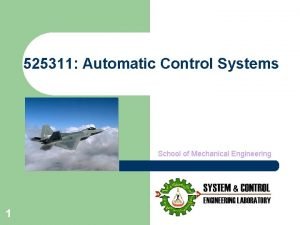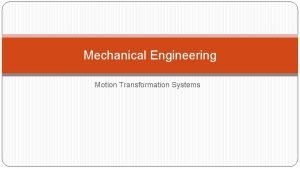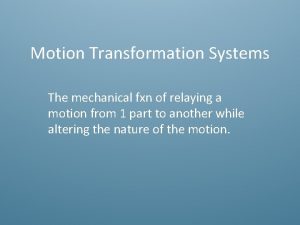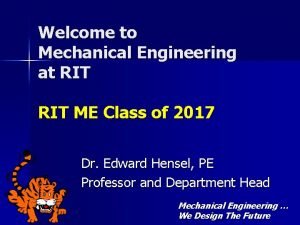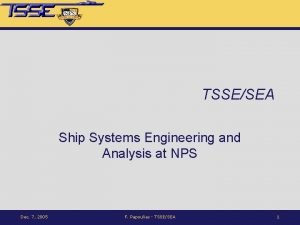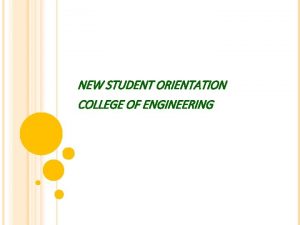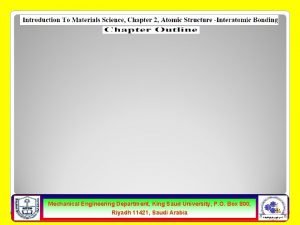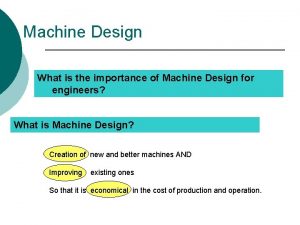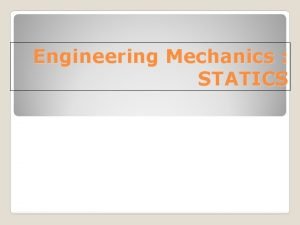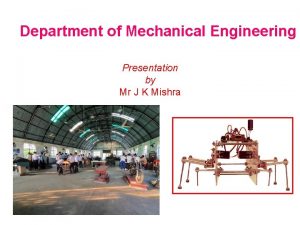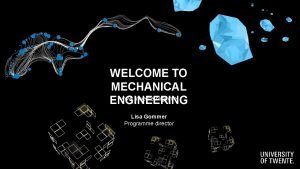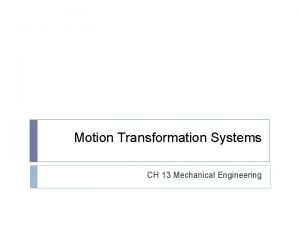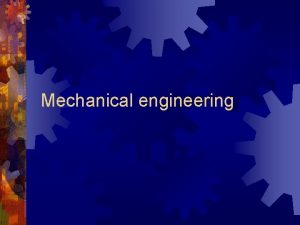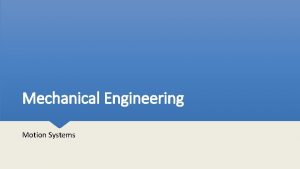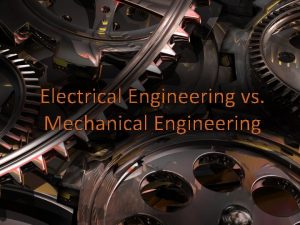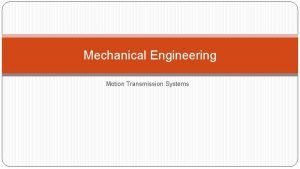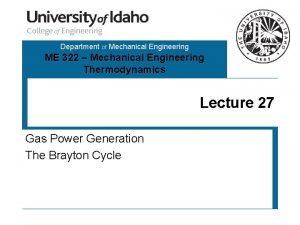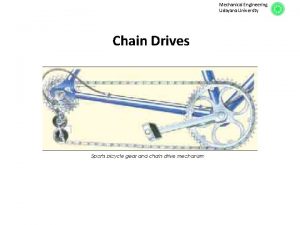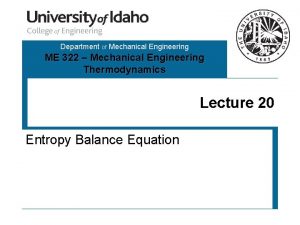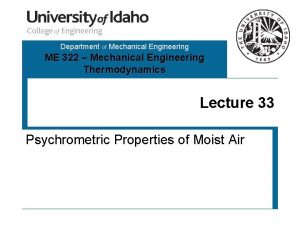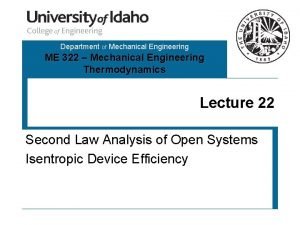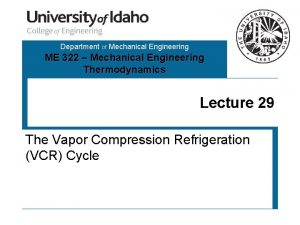Mechanical Engineering Motion Transformation Systems Motion Transformation Definition

















- Slides: 17

Mechanical Engineering Motion Transformation Systems

Motion Transformation Definition Relaying a motion from one part to another while altering the nature of the motion (e. g. rotation to translation or translation to rotation) Types of Motion Transformation systems 1. 2. 3. 4. Rack and pinion Screw Gear systems Cam and follower Slider–Crank mechanism

Rack and Pinion

Rack and Pinion � Contains a rack (straight bar with teeth) and a pinion (gear) While building a rack and pinion you must ensure that: 1. The teeth on the rack and on the pinion must be identical 2. The system requires frequent lubrification 3. The greater the number of teeth on the pinion the slower the rotation

Rack and Pinion uses Steering Wheels for Cars

Screw Gear Systems (2 Types)

Screw Gear Systems (2 Types) � Contains a nut and a screw � In both systems, the initial motion is rotational motion, which is transformed into translational motion Type 1: The Screw is the driver, and the nut is the driven Type 2: The Nut is the driver, and the screw is the driven

Screw Gear Systems: Type 1 Use Car Jack The Screw is turned, which allows for translational motion of the jack to rise

Screw Gear Systems: Type 2 Use Wrench It’s the nut that does the initial rotational movement

Cam and Follower

Cam and Follower � Rotational motion changed to translation motion When building a cam and follower, you must ensure that: 1. The follower must be guided in its translational motion 2. The shape of the cam determines how the follower will move 3. A device such as a return spring is usually necessary to keep the follower in continual contact with the cam.

Cam and Follower Uses Toys

Cam and Follower Uses �Water Powered Mill � The water falling down the wheel creates rotational motion, this wheel is connected to an bar, which is connected to a cam and follower. The follower has a stamping-battery at the end which pounds on the ore

Slider-Crank

Slider-Crank � This is the mechanisms used in pistons � Rotational motion changed into translational motion

Slider-Crank Uses Trains-wheels

Slider-Crank Uses Internal Combustion Engines-Cars
 Principles of complex systems for systems engineering
Principles of complex systems for systems engineering Engineering elegant systems: theory of systems engineering
Engineering elegant systems: theory of systems engineering Mechanical control systems
Mechanical control systems Screw gear system type 2
Screw gear system type 2 Mechanical transformation
Mechanical transformation Screw gear system type 2
Screw gear system type 2 Actual mechanical advantage vs ideal mechanical advantage
Actual mechanical advantage vs ideal mechanical advantage Ytuerasmus
Ytuerasmus Aidan kaminski
Aidan kaminski Nps mechanical engineering
Nps mechanical engineering Adfing
Adfing Cpp mechanical engineering roadmap
Cpp mechanical engineering roadmap King saud university mechanical engineering
King saud university mechanical engineering What is machine
What is machine Center of gravity engineering mechanics
Center of gravity engineering mechanics Mechanical engineering presentation
Mechanical engineering presentation Jis drawing standard
Jis drawing standard Lisa gommer
Lisa gommer


